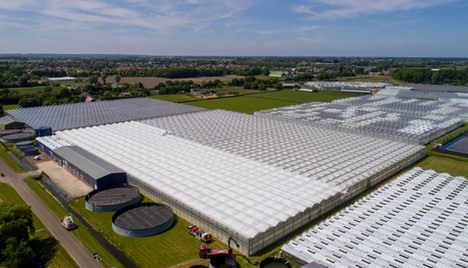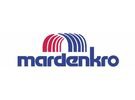There is an optimal amount of light for every crop. Too little means that production will be low. But too much will put pressure on the yield and quality. So custom work is always key.

Tomatoes and cucumbers (max. 30 mol per m2)
These crops love light. They can convert 30 mol light per m2 per day* into production. That means: they are not easily satisfied. In areas where there is little light in winter, it is therefore a good idea to improve light incidence. This can be done by reducing the reflection on the greenhouse cover with AntiReflect. On the inside, AntiCondens ensures that a fine film of water lines the greenhouse cover instead of big drops of condensation. That also considerably improves light incidence.
In a greenhouse without coating, a lot of sunlight falls on the heads of the plants, with very little reaching the bottom. This can be prevented with a diffuse coating. The lowest leaves then also become productive and this ensures a better yield and better quality. The diffuse light, with no alternating between shade and sun, ensures an easy, stress-free crop.
One condition with high light incidence is always that the temperature of the plants must not rise too much. This can be achieved with ReduHeat, which selectively reduces the heat radiation. The crop can assimilate optimally, but doesn't become too hot. This effect can also be achieved with ReduFuse IR, which combines the advantages of diffuse light with heat reduction.
In hot dry regions, it is essential to reduce the light in the summer. In that case, ReduSol and an optional extra layer of SprayChalk are ideal solutions.
Sweet peppers (max. 25 mol per m2)
Sweet peppers love light, but slightly less than tomatoes and cucumbers. In fact, the same applies to this crop as described above. Except that in the hot months, a shading agent will be necessary sooner. This is even more important because there is always a competition in sweet peppers between fruiting and outgrowth of the fruit. The balance between the two processes is easily disrupted when heat stress occurs. Extra attention for heat reduction yields rewards, whereby both ReduFuse IR and ReduHeat can benefit the growth of sweet peppers.
Lettuce (max. 15 mol per m2)
Lettuce has very different requirements. The optimal light level is half that of tomatoes. The use of coatings therefore differs too, and very much depends on the region. If the light level is the inhibiting factor over a long period, coatings which improve the light incidence will certainly be worth considering. But everywhere, and particularly in warmer regions, it is important to reduce the light and particularly the heat level for some of the year with coatings like ReduSol and perhaps SprayChalk.
Roses and chrysanthemums (max. 22-30 mol per m2)
Roses and chrysanthemums fall into the same category as tomatoes and cucumbers: they are crops which love light. That means that coatings are used in a similar way. However, there is one important factor. Flowers and buds are often sensitive to heat stress; some colours are even very sensitive. So: extra attention for heat shielding. For roses, the coating ReduFlex Blue has results. It combines heat shielding with selective inhibiting of blue light. This makes the rose stems longer and can improve the flower quality.
Other cut flowers
Many cut flowers are in the middle category. They like light, but not too much. That mainly means that sun-shielding coatings must be used earlier in the year than with roses and chrysanthemums. These crops certainly benefit from diffuse light too.
Potted plants (max. 4-12 mol per m2)
Most potted plants love the shade. For much of the year, they need protection from both too much light and too much heat. ReduSol is then the ideal coating. Some varieties - for example fuchsia and hydrangea - can take a slightly higher light incidence. Depending on the region and location, the heat-shielding diffuse coating ReduFuse IR may be an idea.
Studies by Wageningen University & Research have shown that various varieties of potted plants can take more light than is usual in practice. In trials, a higher light level resulted in a faster production time and much heavier plants. An important condition, however, is that there is no heat stress and that the humidity does not fall too much. This was achieved with diffuse light and humidifiers. Dutch growers often apply a diffuse coating and thus achieve higher and faster production.
Choosing the right coating not only depends on the crop, but also on the climate conditions and the type of greenhouse. Interested to know which coating will get the best out of your crop? The ReduWizard gives personal advice online and our account managers are always ready to answer questions.
*Maximum number of mol per m2 is an indication and these figures are based on data from Purdue University.
For more information
Mardenkro
www.redusystems.com
